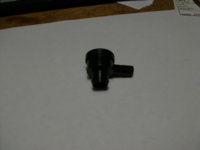KentMoney
XS650 Addict
I asked him if these used any loctite/bonding agent when pressing the halves together and he said they didnt. He estimates he used about 4-5 tons to press them together...
hope it doens't cause problems later.
Will be posting pics of my engine all soda blasted and clean. Found a place here in Morgan Hill, CA that does soda blasting. Cost me $58 to do the whole engine pretty much!
hope it doens't cause problems later.
Will be posting pics of my engine all soda blasted and clean. Found a place here in Morgan Hill, CA that does soda blasting. Cost me $58 to do the whole engine pretty much!




 I buttoned the engine back up and set up the Pamco differently this time, and it worked perfectly.
I buttoned the engine back up and set up the Pamco differently this time, and it worked perfectly.